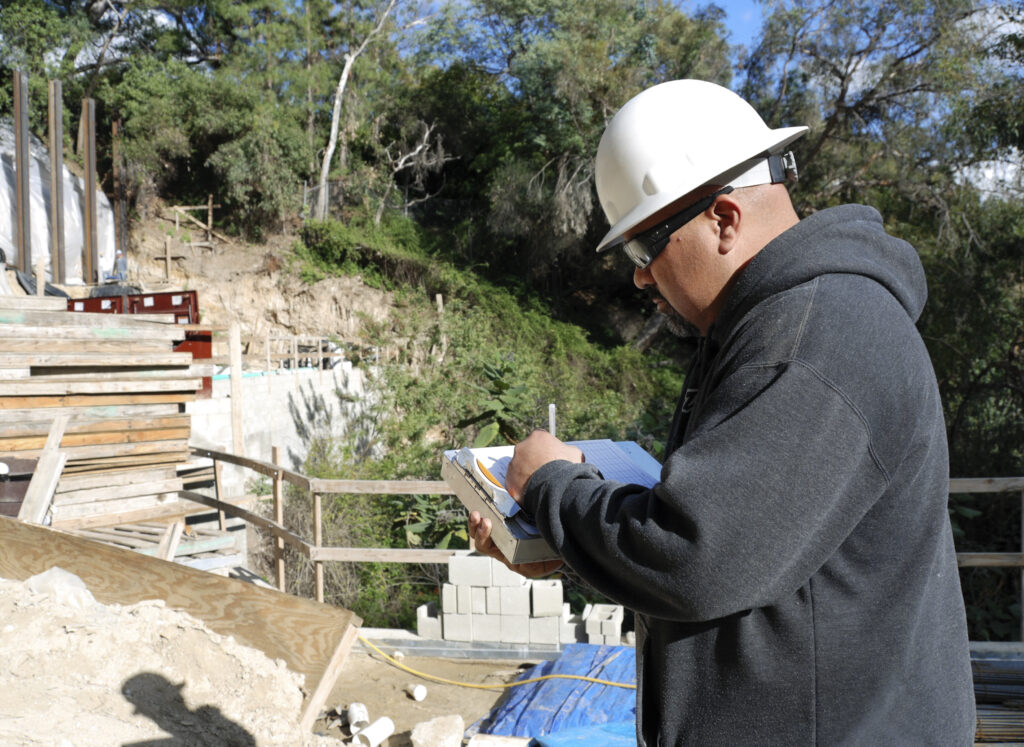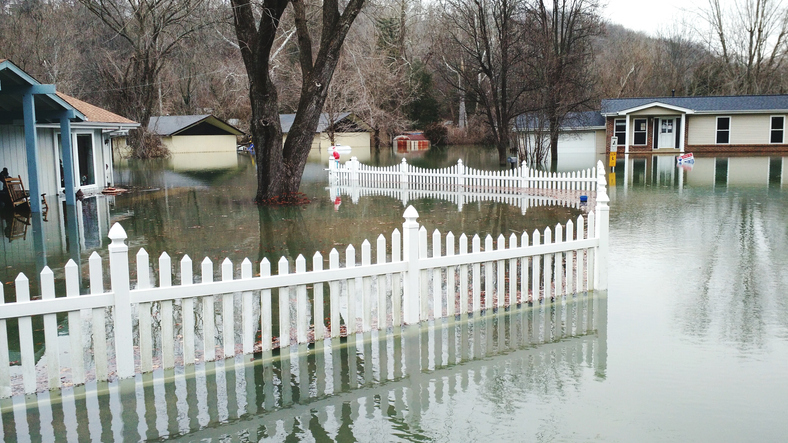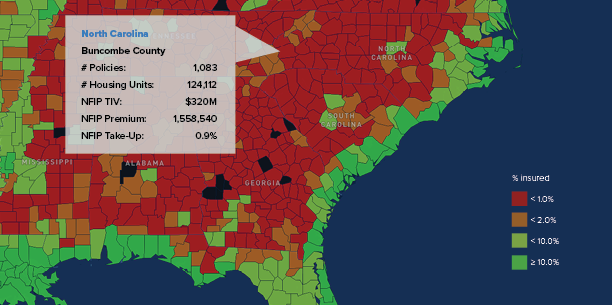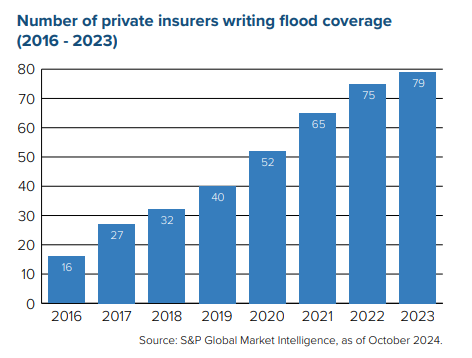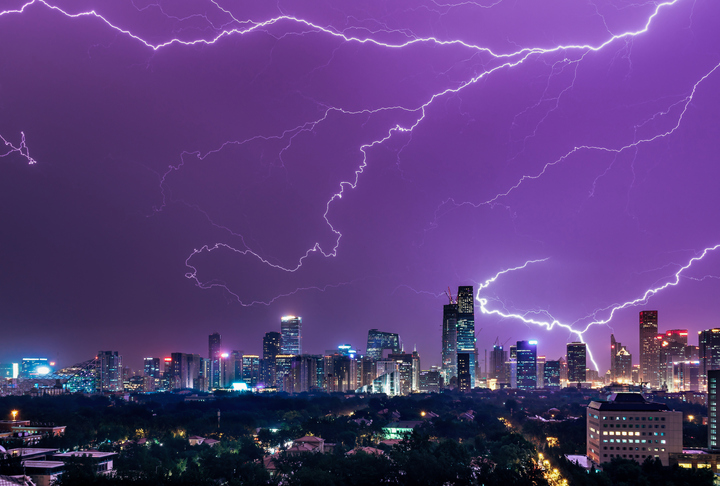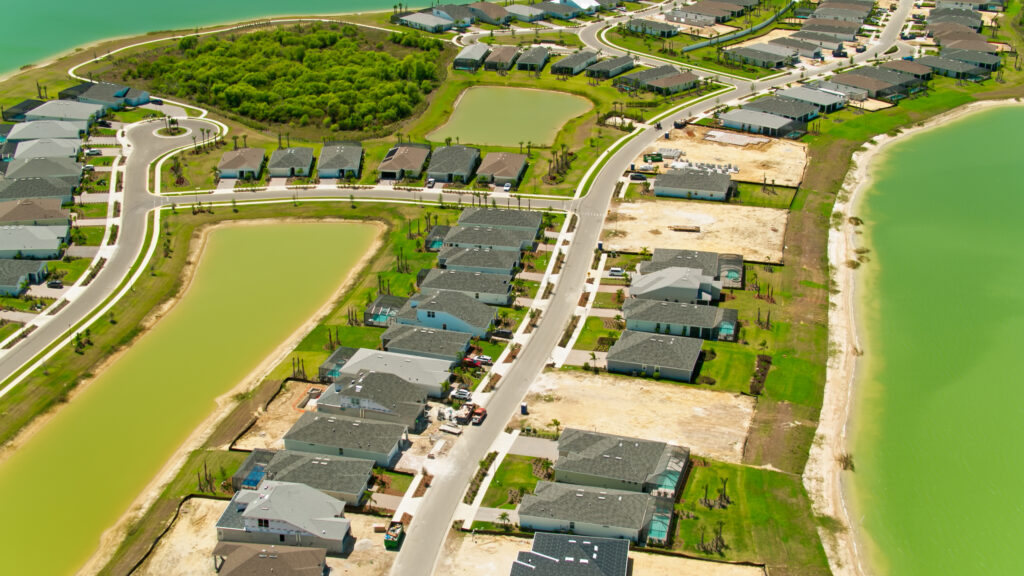
By Lewis Nibbelin, Contributing Writer, Triple-I
Identifying opportunities to mitigate climate risk was on the minds of “Risk Take” presenters at Triple-I’s 2024 Joint Industry Forum (JIF). Risk Takes – a new addition at JIF – are 10-minute problem/solution-oriented presentations by high-impact experts who are deeply engaged in addressing specific perils.
Inserted between panel discussions of broader issues and trends, these compact talks were tightly focused on how current challenges are being met.
Munich Re US, for example, is diving deep into understanding how consumers and insurers perceive climate-related risks. According to RiskScan 2024, a recently published survey by Munich Re US and Triple-I, more than one-third of respondents ranked climate change as a top concern, identifying it as “a key driver of insurance costs,” said Kerri Hamm, EVP and head of cyber underwriting, client solutions, and business development at Munich Re US.
However, when it comes to flood risk, the survey highlighted a substantial disconnect between concern about the peril and understanding of related insurance coverage. Despite understanding the rising severity of climate risks and their direct influence on insurance costs, many consumers erroneously believe their homeowners policy includes flood coverage or that they do not reside in an area at risk of flooding, contributing to a significant flood protection gap.
High-risk areas are only expanding, Hamm pointed out, as upsurges in flash flooding implicate more and more noncoastal properties. Increased private-sector interest in flood risk has led to new forms of flood coverage, such as a private Inland Flood Endorsement offered at Munich Re, to support these properties. Take-up rates for these insurance products remain low – underscoring the importance of consumer education and improved training for agents and brokers to encourage flood insurance sales.
“We can do better as an industry to make options available, attractive, and better known to vulnerable homeowners,” Hamm said. Education is vital, as is “developing innovative solutions that benefit our society by closing the insurance gap.”
Combining geoscience with data science is one solution, said Helge Jørgensen, CEO and co-founder of the Norway-based 7Analytics. Jørgensen discussed how, by leveraging geological and hydrological information with machine learning technology, his company develops granular data that can map out property flood risk “neighbor by neighbor,” enabling highly representative flood policies.
Beyond incentivizing private insurers to write flood coverage, this data is further “crucial for communities,” Jørgensen stressed, “because, if you have a lot of information on which areas and buildings are more exposed to flooding, then you can build resilience.”
Urban growth, particularly rising populations in higher-risk areas, render community-level resilience initiatives even more important, he noted.
Guidewire’s Christina Hupy reinforced Jørgensen’s emphasis on utilizing granular data while discussing HazardHub, a property risk data platform owned by Guidewire.
“Historically, risk data was provided only at the Census block or even ZIP code level,” Hupy said, whereas HazardHub provides comprehensive and updated geospatial data across various perils to pinpoint individual property risk levels.
In collaboration with Triple-I, HazardHub will release a report in early 2025 focusing on wildfire risk within three high-risk California counties, aiming to demonstrate how using detailed geographic data can help sustain or improve underwriting profitability within such areas.
“We’re going to need to look at mitigation in these high-risk areas as the next frontier,” Hupy said, “to spark that interest from California government and carriers” and enhance resilience “both from a customer and a business perspective” in the state.
California’s Department of Insurance helped launch this frontier last month by announcing new regulations allowing insurers to use catastrophe risk modeling to set rates, rather than limiting insurers to only historic risk data, as was the rule for decades. Insurers must also expand their coverage in riskier areas and account for resilience efforts when setting rates, which was also not previously possible.
Alongside emerging forms of insurance coverage and innovative granular data tools, such regulations empower the insurance industry to incentivize climate risk mitigation and achieve considerable progress towards eliminating the protection gap.
Learn More:
RiskScan 2024 Reveals Risk Priorities Across the Insurance Marketplace
JIF 2024: What’s In a Name? When It Comes to Legal System Abuse, A Lot
JIF 2024: Collective, Data-Driven Approaches Needed to Address Climate-Related Perils
JIF 2024: What Resilience Success Looks Like
JIF 2024: Panel Highlights Human-Centered Use of Advanced Technology
Climate Resilience and Legal System Abuse Take Center Stage in Miami





